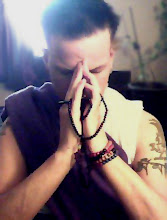“I never heard of that. I guess it’s about a quarter the size of my well?”
“No. More than that,” answers the other.
“OK—a half?”
“Much bigger,” the strange frog laughs.
“The same size, then?”
“No, even bigger,” says the foreign frog.
“Alright. This, I got to see,” says the oldster as he clambers out the well and sets out for the ocean.
It’s a hard road, but at last he arrives.
Unfortunately, when he sees the ocean, the shock is so great that it blows his mind and his head explodes.
Lately it has occurred to me that this beloved story told by the 19th-century master Patrul Rinpoche could apply to many of us in our encounter with Buddhism. Just like that frog, we have a bad case of the disease of conceit. We are so confident in the opinions that we bring with us to our encounter with the dharma that we neglect how it radically differs from our preconceptions. We are the frog before it leaves the well.
Sadly, many of us believe that we are already in possession of all there is worth knowing about Buddhism. Such a conceit has a number of causes, but chief among them is the conviction that Buddhism and our own pre-existing assumptions are identical. This belief is particularly pernicious because it blocks any genuine encounter with the dharma. We can represent this belief in the form of a syllogism: My opinions are compassionate. Buddhism is compassionate. Therefore Buddhism must be identical with my opinions.
We exhibit a similar lack of self-awareness when we assert that our version of Buddhism is free of dogma. What do we really mean when we say this? It might be rephrased: Buddhism should be free of dogma (that I don’t like). However, Buddhism must conform to contemporary opinions and the received wisdom of Enlightenment thought and scientificity (because they are not dogmas, and I like them).
A common example of unconcern with examining our prior assumptions is evident when we declare that “Buddhism is just common sense,” when that’s precisely what it’s not. Dharma is nothing if not counterintuitive. After all, our perception and “intuition” indicate that we possess a permanent, singular, and autonomous identity, ensuring our entanglement in the cycle of birth and death.
It’s such assumptions—whether religious, political, or cultural—that have to be temporarily suspended if we’re to uncover the nature of reality.
The pride behind holding beliefs unquestioningly is one of the six stains to be avoided when receiving the teachings. As Patrul Rinpoche himself pointed out, it is very difficult to recognize the stains for what they are. Yet, unless we can dissolve them, our receipt of spiritual teachings will at best be profitless, and at worst, poisonous.
What’s required is a sense of humility, which will render us open to the teaching. The traditional analogy that illustrates this positive approach to the dharma is that of a vessel placed right side up so that it can be filled with water. This receptivity is not to be confused with credulity, nor a hurried reach for certainty when the teachings get difficult. It is rather a readiness to attend to the words and meaning of the teaching, and to persist in critical reflection until it is digested and becomes a part of our thinking.
Regrettably, there are many examples of our casual habit of assuming, without evidence, that two-and-a-half millennia of Buddhist teachings are identical with modern opinions. You see its effect in the dismay expressed by some when they discover, for instance, traditional Asian Buddhist views on ethical issues regarding matters of life and death. What often results is a determined effort to excise the offending teaching, sometimes in the name of a “higher compassion,” or to rejig it to complement notions that are currently fashionable.
One could well guess that our disregard for the actual teaching is one reason why many Asian Buddhists have come to regard Western Buddhists as ultimately unserious. In fact, this might sometimes lead the more cynical Asian teachers to steer clear of anything that might challenge their putative disciples or provoke their displeasure. Some might even be tempted to alter the teachings themselves.
Naturally, such evasiveness accomplishes little for the survival of the dharma. What is the use of a dharma, after all, that doesn’t challenge our assumptions?
We might yet espouse a view of the dharma that is capable of undermining our pride. Patrul Rinpoche offers the Four Metaphors given in sutra:
Noble one, think of yourself as someone who is sick,
Of the dharma as the remedy,
Of your spiritual teacher as a skillful doctor,
And of diligent practice as the way to recovery.
As for the teacher, there are enough genuine ones. And if we go and find one, things could start to get interesting for us frogs right about now.
Namaste!
Ev~
Credits:
Lama Jampa Thaye is a scholar, author, and meditation teacher from the UK.
Illustration by James Thacher






No comments:
Post a Comment